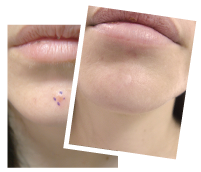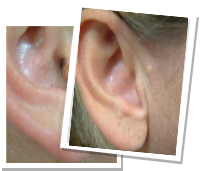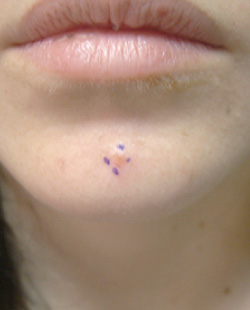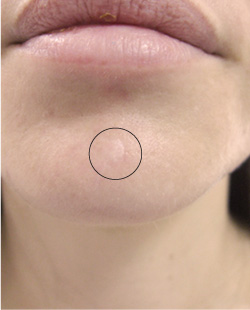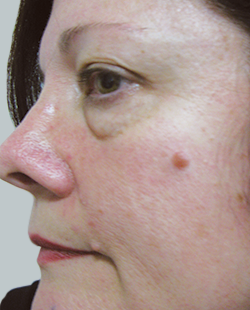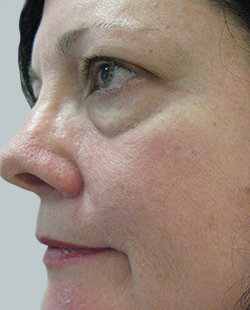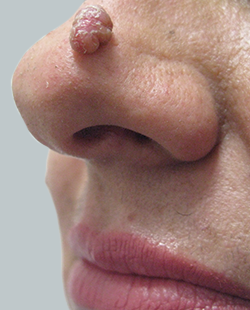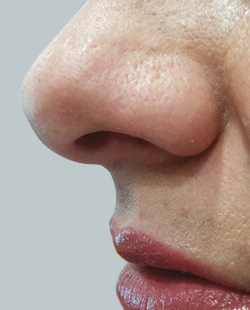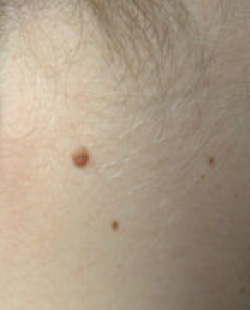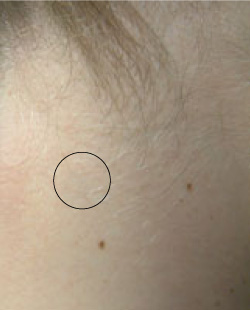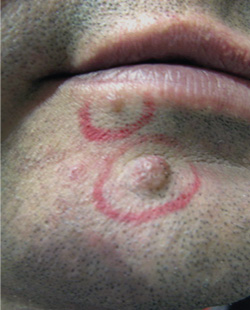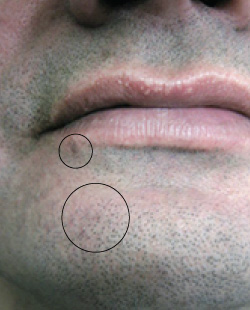While most moles are harmless, some may need to be removed if they look suspicious. At Me Clinic Melbourne, we offer a range of procedures for mole removal, which are performed by cosmetic doctors and plastic surgeons.
It’s important to note that every individual’s anatomy and situation is unique, and mole removal may not always be necessary or beneficial.
Surgical Warning: Any surgical or invasive procedure carries risks. Before proceeding you should seek a second opinion from an appropriately qualified health practitioner.
Read more on the Risks of Surgery
Types of moles and non-cancerous moles
It is common for a person to have non-cancerous moles, skin tags, or warts on their skin. Most types of moles are generally harmless, such as:
Common Nevi: A normal pink, tan, or brown mole with a distinct edge.
Congenital Nevi: These moles are noticed at birth. They can sometimes progress as a melanoma or skin lesion.
Dysplastic Nevi: Larger and irregularly shaped, often with uneven colour or a dark brown centre, and can develop into a melanoma.
Moles aren’t contagious and they usually don’t hurt, itch, or bleed. However, if you suspect a mole is abnormal you should speak to your healthcare provider.
Treatment options to remove moles
While a normal (benign) mole may not need to be removed, some individuals may choose to have a mole removed for cosmetic reasons or due to discomfort. At Me Clinic, we offer a range of treatment options that can be performed under local anaesthetic. However, it’s important to note that every individual’s situation is unique, and the outcome of mole removal can vary. While we strive to use the latest technology and techniques, we cannot guarantee a specific result or that there will be minimal scarring. Mole methods include:
Before 
After 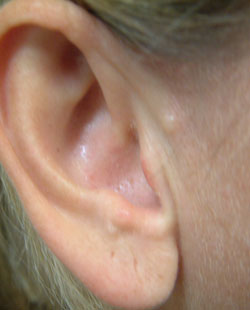
Performed By: Dr Ahmed Omarjee (MED0001186584)
Scarless and pain-free procedure
Radiofrequency surgery is a minimally invasive procedure that can be used to remove raised moles, lumps, bumps and scaly skin lesions. While this procedure often results in minimal scarring and a brief healing period, it’s important to note that individual experiences can vary. Some individuals may experience discomfort or longer healing times.
Radiofrequency technology uses high-frequency energy, without the need for a scalpel incision or stitching. Discomfort is minimal and healing is quick with virtually no bruising or swelling. A wide range of benign skin cells lesions and mole types can be treated with this transformative radio-wave surgery.
How to inspect moles
A mole’s appearance can change over time, so you should periodically inspect your moles or have someone else check them for you. Use the A,B,C,D,E method to inspect your moles. If a mole displays any of the signs listed below, make sure to have it checked by a specialist.
Asymmetry – If one half of the mole doesn’t match the other half.
Border – If the border of the mole is blurred or irregular looking.
Colour – If your mole displays multiple colour pigments.
Diameter – If you have a big mole with a diameter larger than a pencil eraser.
Elevation/Evolution – If the mole becomes raised or changes shape over time.
Before 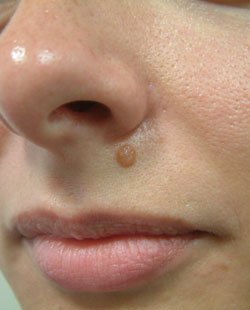
After 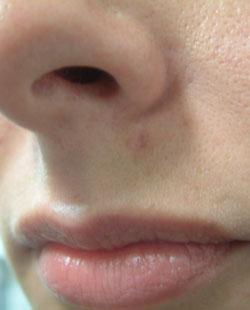
Performed By: Dr Ahmed Omarjee (MED0001186584)
Mole removal before and after
Before the procedure
The right removing moles procedure for you will be discussed during your initial consultation with a Me Clinic dermatologist or another skincare practitioner. If yours is a harmless unwanted mole, the procedure will be straightforward and almost completely painless. Scarless mole removal is entirely possible at Me Clinic. Prior to treatment, you may be administered local anaesthesia for comfort and will be fully awake during the mole procedure. Get your mole medically reviewed with screening exams.
During the procedure
During the procedure, we use several methods for mole, skin tag, or lesion removal. One method we use at Me Clinic involves advanced radiofrequency electrode equipment, which often does not require an incision or sutures. However, it’s important to note that individual experiences can vary. Some patients may experience temporary skin discoloration after mole removal, which typically fades over time, but this is not guaranteed. The mole procedure can be performed at your chosen Me Clinic.
After the procedure
After the procedure, the skin around the site may feel tender and appear discoloured. Aftercare typically involves the application of an ointment and covering the area with a band-aid for a few days. While many patients do not experience significant side effects or require extensive recovery time, it’s important to note that individual experiences can vary.
If cauterizing or stitching mole removals method have been used, your Me Clinic practitioner will apply an ointment to the area to keep it moist while healing. The treated area will be covered with a dressing. You will need to keep the area clean and moist for a few days and change the dressing as instructed by your clinician. Avoid sun exposure for a few weeks and apply sunscreen when outdoors.
Find out if you need to remove melanoma
Contact Me Clinic for a one-on-one consultation with a professional cosmetic physician. You can use the handy online consultation form for more information about mole removal pricing and accessibility. Your Me Clinic physician can evaluate your moles, scabs, skin lesions and keratosis. If it is a suspicious mole, ask your treating professional to perform a biopsy for examination.
Being proactive about remove melanoma and other types of skin cancer is important for your health, particularly if:
- You have fair skin.
- You have many moles on your body.
- Your family members have moles, atypical moles, or a history of skin cancer. cancer screening.
Dr Gordon Ku
MBBS (Melb). FACCSM (Med), FCPCA . FA4M (Dubai)
Cosmetic Doctor (MED0001169203)
Read more
Dr Tim French
MBBS, FRACGP, Dip Surg Anat, Cert Phleb, Cert US Phleb
Specialist Medical Practitioner / Phlebologist
Read more
Surgical Warning: Any surgical or invasive procedure carries risks. Before proceeding you should seek a second opinion from an appropriately qualified health practitioner.
Can I remove my own moles?
We strongly advise against removing moles yourself due to several important reasons, including the risk of infection, potential for significant scarring, and the possibility of not fully removing the mole. At Me Clinic, our cosmetic physicians are highly qualified and experienced in performing mole removal surgery. While we strive to perform the procedure safely and aim for the best possible long-term results, it’s important to note that individual experiences and outcomes can vary. Check out some mole removal success stories, face mole removal and great treatment results from other procedures.
How much does mole removal cost?
Every patient has different requirements, so there is no standardised mole removal price. However, the best treatment options and costing will be worked out during your initial consultation.
What are the most popular procedures at Me Clinic Melbourne?








